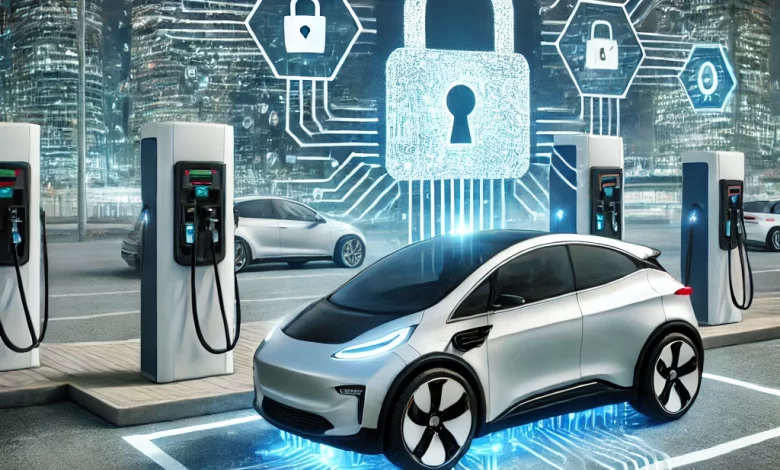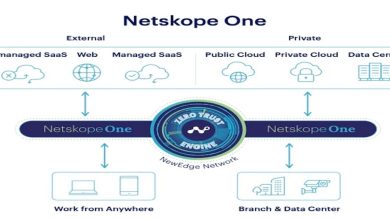Securing Singapore’s Electric Vehicle Future: Addressing the Cybersecurity Challenges of EV Infrastructure

By: Rebecca Law, Country Manager, Singapore, Check Point Software Technologies
 The global shift toward electric vehicles (EVs) has become unstoppable, with both government initiatives and consumer demand driving rapid adoption. By 2030, millions of EVs are expected on the roads, and countries are racing to build the necessary infrastructure to support this shift. While the ecological benefits of EVs are undeniable, there’s a looming cybersecurity challenge that must be addressed. The rise of EV infrastructure, especially charging stations, introduces new digital vulnerabilities that cybercriminals are eager to exploit.
The global shift toward electric vehicles (EVs) has become unstoppable, with both government initiatives and consumer demand driving rapid adoption. By 2030, millions of EVs are expected on the roads, and countries are racing to build the necessary infrastructure to support this shift. While the ecological benefits of EVs are undeniable, there’s a looming cybersecurity challenge that must be addressed. The rise of EV infrastructure, especially charging stations, introduces new digital vulnerabilities that cybercriminals are eager to exploit.
In Singapore, the government’s Green Plan 2030 aims for all newly registered cars to be cleaner energy models, with 60,000 EV charging points planned. As this infrastructure expands, it’s essential to consider the accompanying cybersecurity challenges.
Ensuring Cybersecurity in Singapore’s EV Ecosystem
As the world embraces greener transportation, it’s crucial to address the digital threats that comes with the digitalisation of mobility. EVs, charging stations, and related infrastructure form a complex ecosystem that relies heavily on interconnected systems and data exchanges. These systems are vulnerable to cyberattacks, which could have far-reaching consequences. In Singapore, where digital services and urban infrastructure are highly integrated, maintaining robust cybersecurity for EV systems will be critical to ensuring consumer trust and operational resilience.
The Growth of EV Charging Infrastructure
As charging stations multiply, they become critical components of urban infrastructure, offering convenience for EV owners. However, many charging points rely on cloud-based services to manage transactions, monitor availability, and provide real-time data, making them prime targets for cybercriminals.
With Singapore’s push toward becoming a Smart Nation, safeguarding EV infrastructure against cyber threats will be key to protecting broader smart city initiatives from potential disruptions. As the electric vehicle industry grows, so will the number of attacks targeting EV infrastructure. Charging stations, cloud services, payment systems, and even the vehicles themselves are all potential targets. Cybersecurity for these systems must evolve to keep pace with the growing threat landscape.
- API Security Vulnerabilities: APIs (Application Programming Interfaces) manage everything from user authentication to transaction processing and energy flow monitoring. With APIs attacks in the automotive industry surging by 380%, securing these systems is crucial. Poorly protected APIs can be exploited to steal data or disrupt services. In a connected city like Singapore, it will be a critical step toward minimising vulnerabilities and ensuring smooth operations.
- Man-in-the-Middle (MitM) Attacks on Charging Stations: This type of attacks can intercept communication between a vehicle and a charging station, allowing malicious actors to manipulate sessions or steal payment details. Public charging sessions, especially fast-charging systems, are at the greatest risk due to the high turnover rate, enabling the cybercriminals to gain access to large amounts of data or cause widespread disruption.
- Ransomware and Malware in Charging Stations: Ransomware attacks on charging stations can cause significant disruption. In 2022, ransomware infected several charging stations, locking systems until ransoms were paid. These attacks can have significant financial consequences for operators and cause major inconvenience to EV users, especially in regions where alternative charging options may be limited. As ransomware attacks continue to rise, the electric vehicle sector must brace itself for more targeted efforts. Check Point’s 2024 Security Report noted that ransomware attacks surged by 90% in the previous year, with attackers using increasingly sophisticated methods to compromise critical systems, including those used in EV charging infrastructure.
- Vehicle-to-Grid (V2G) Vulnerabilities: Vehicle-to-Grid (V2G) technology, which allows electric vehicles to return electricity to the grid, is a groundbreaking innovation that enhances energy management and supports grid stability. However, the communication between EVs and the grid introduces new cyber risks. A successful cyberattack on a V2G system could result in unauthorised energy transfers, disruptions in grid operations, or even physical damage to both the grid and connected vehicles. With such systems in place, attackers could potentially access and manipulate critical grid infrastructure by exploiting vulnerabilities in electric vehicles. The consequences of a successful attack could include regional power outages, unauthorised usage of vehicle energy reserves, and significant financial losses.
Securing the Future: Strategies for Safeguarding EV Infrastructure
To mitigate the growing cybersecurity risks, organisations must adopt comprehensive security measures.
- API Protection and Encryption: Securing APIs with encryption and robust authentication mechanisms is essential. Regular audits can help identify vulnerabilities before they’re exploited.
- Zero Trust Architecture: A Zero Trust model ensures that every interaction within the network—whether between charging stations, vehicles, or mobile apps—is authenticated. This approach, which aligns with Singapore’s broader digital security efforts, limits lateral movement in case of a breach.
- Securing Payment Systems: Strong encryption of payment data, and multi-factor authentication (MFA), can prevent unauthorised access. Regular penetration testing of payment systems is also critical.
- Regular Software and Firmware Updates: Unpatched vulnerabilities are a major risk. Singaporean operators should implement regular updates and over-the-air (OTA) systems to keep devices secure with the latest security patches. In addition, maintaining a robust Software Bill of Materials (SBOM) ensures that operators are fully aware of all software components in use, allowing them to quickly address vulnerabilities when they are discovered.
- Collaborating with Managed Security Service Providers (MSSP): Given the complexity of EV infrastructure, many organisations may lack in-house expertise. By partnering with MSSPs, operators can enhance their cybersecurity capabilities and ensure compliance with industry standards.
The Future of Regulations and Compliance
The electric vehicle revolution offers tremendous environmental and economic benefits, but strong cybersecurity measures are critical to realising its full potential. In Singapore, the government’s continued focus on digital and infrastructure security provides a strong foundation to secure the future of EVs. Ensuring that EV infrastructure is resilient against cyberattacks will not only protect investments but also build consumer confidence in that nation’s push toward greener transportation. By adopting comprehensive cybersecurity strategies and adhering to industry standards, Singapore can ensure that the future of mobility is both secure and sustainable.




